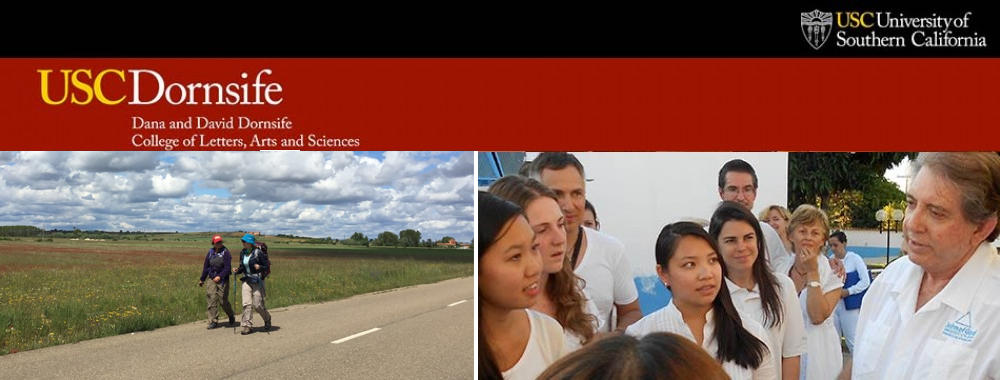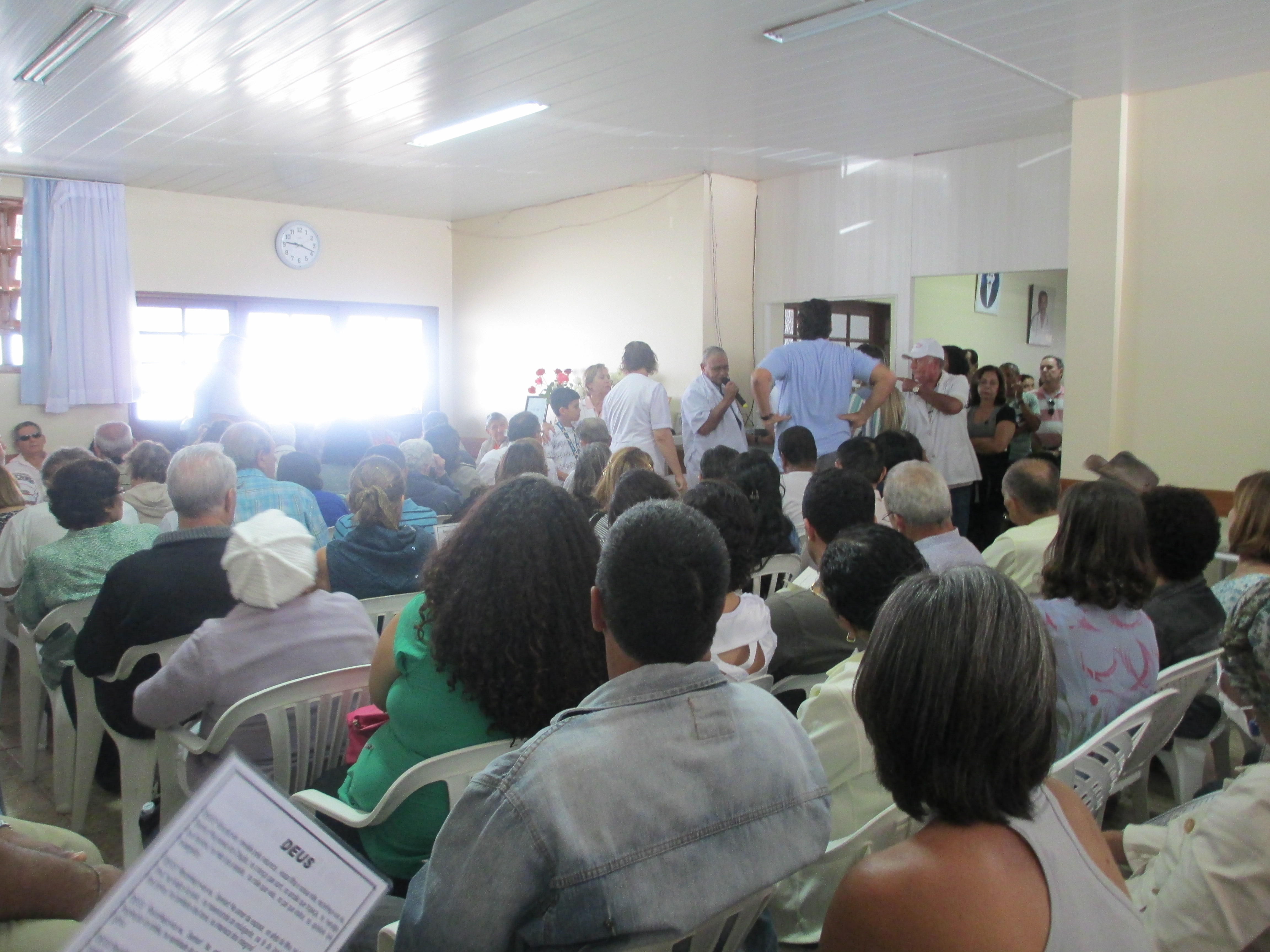by Maggie Deagon
“People only come here when they think they will die.” This was my introduction to Spiritist healing in Brazil, specifically by Valentím, a healer who caters to locals—young and old, often poor—out of a small center in Brasilia. Fred, one of Valentím’s patients, spoke these words to me. He was diagnosed with a primary seminal vesicle tumor, a very rare form of cancer around the world. After doctors from Brazil to Germany to the United States tried to convince him to allow them to operate, he turned to Valentím as a last resort—disbelieving but fearing for his life.

The Medium Valentim and his assistants with the Brazil PWP 2014 class.
From back row left, the students are: Sarah, Maggie, Shoey, Oliver, and Rafael. Front row from left: Erin, Grace, Caitlin, and Christina.
“I am only alive because of this place,” Fred told us enthusiastically. He had pulled us aside during the healing to invite us to hear his story. He, like many others, credit Valentím’s power with their recovery from illness. Their stories are extraordinary, yet as Americans, it is initially difficult to be swept up in their fantastical. Through participant observation and immersion in the process, we allowed ourselves to be as close as possible to the experience of healing on which many Brazilians rely.
The setting in which Valentím heals is a humble building in a rather rural section of Brasilia. Across from his center is an open field, and adjacent to it is a small coffee shop where patients and residents can grab a cheese sandwich for a few reales. Patients begin lining up outside of the center along all walls at 7am. These are non-cancer patients, people diagnosed with everything from AIDS to multiple sclerosis. Upon entering the center, one is greeted by portraits of the spirits who work through Valentím that decorate the walls. A hallway lined with gurneys and patients leads to the main room, filled with plastic chairs and lined again with gurneys on which cancer patients sit and reflect. Their time of silent prayer creates an energy which they refer to as “radiation” treatment—a healing process in itself. Many of the patients use this treatment in addition to biomedical attention. Several mentioned that they receive chemotherapy or have undergone surgery for their illnesses. Others, however, seek no further treatment.
After the “radiation,” patients file into a second room where Valentím awaits, having already been taken over by the spirit of a deceased Italian medical doctor. Valentím himself has no medical background, and in many ways, acts only to help the spirits visualize their surgeries which occur beyond what our eyes can see. He treats each patient one-by-one. Each person points to the area of discomfort or disease, and Valentím clips forceps over their skin, sometimes not even touching them. He slaps them playfully and makes jokes as they go along, reminding them that he, the spirit, is Italian, not Brazilian.
The students in our group laid on gurneys to be treated. Being unable to communicate with Valentím in Portuguese, I could not discern what treatment he was giving me, but as he ran the forceps over my chest and arm, I felt closeness and sincerity rather than a sense of violation. His jolly spirit and eagerness to touch hands and hug so many ill people gave me a sense of contentment even without verbal understanding. Undoubtedly, that can have an effect on the ill who see him, as well.
There are more forms of healing than I have been exposed to through my culture. Likewise, there are more illnesses that others consider in need of healing. Sharifa, a biomedical doctor who assists Valentím, spoke of several sources of disease: food, genetics, and bad thoughts. Of these, she told us that negative thoughts are the most difficult to cure. Whether this is a reference to psychological disorders or physical manifestations of stress, I am unsure. However, it calls to mind something that Western biomedicine tends to ignore—the experience of illness emotionally in addition to its bodily manifestation. Undoubtedly, what influences one part of us is likely to have holistic effects, and if we ignore the total quality of disease, I am unsure that we can feel wholly cured. Perhaps through acceptance and attention, as Valentím provides, those who are gravely ill can at least be given some peace of mind. Given the stories we were told, who am I to deny the extent of their healing power?



